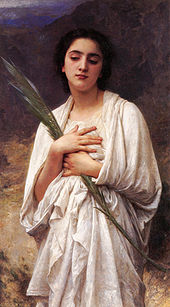Christmas is the season for time-honored traditions experienced with friends and family. We mark this special occasion by decorating with particular items in order to make our homes feel festive for ourselves and for those who visit. Twinkle lights, wreaths and trees are in high demand throughout Boston and are slowly appearing on doors and spotted within windows. Just by driving by a house lit up by tiny rainbow bulbs, many of us experience a feeling of uplift and immediate joy. Holiday décor plays a very strong influence upon creating the magic that the Yule Tide brings and the emotions that effervesce from these beautiful signs we associate with Christmas. Every year, families partake in seeking out these novelties but have you ever wondered where the traditional influence began? Find out what makes a balsam a Christmas tree and why a circle of garland eventually resulted into a holiday wreath. You may just be surprised how these icons earned their fame and resulted into our most cherished seasonal ornamentation!
Here’s an interesting fact: Did you know that Christmas trees are the only single variety of arbor grown in all 52 states? Yup- and that even includes Alaska and Hawaii! Balsam, spruce and fir species are the #1 cultivated species in the U.S. and that’s all because of our love for Christmas! Historically, there’s a ton of stories claiming the truth behind the Christmas tree but the one I like best is the tale about how the ancient people in the northern hemisphere celebrated the winter’s solstice, (the longest day of the year). They believed that the Sun God had cyclical levels of feeling well during the warmer season and weak during the cold. On December 21st, there would be a celebration for the Sun God because it was the end of her “ailing term” (the cold dark nights) and the beginning of her health once again (the return of heat and sunlight). The people would mark this occasion by using pine and evergreen boughs to hang in their homes as a gesture for an early spring arrival. They chose pine because it held its bright green color throughout the year. The early Vikings and Romans also implemented a similar ritual when they displayed Christmas trees as a sign of continued health and everlasting life.
As you can imagine, wreaths have been used as a symbol throughout time holding both a positive and negative implication. Depending on the culture, region and religion, this icon could be gifted as either a token of victory or hung as a sign of death. In “Christmasy” terms, the shape being a circle is typically tied with unity, everlasting love and “infinity” depictions, almost always recognized as a pleasant connotation. As you might see today different styles woven out of berries, twigs or branches, the wreath is traditionally made with pine bows because past civilizations sought after its unchanging green hue. If you’re Catholic, you might be interested in knowing that the wreath became associated with Christmas after the resurrection of Christ as it became used as a sign of eternal life.




